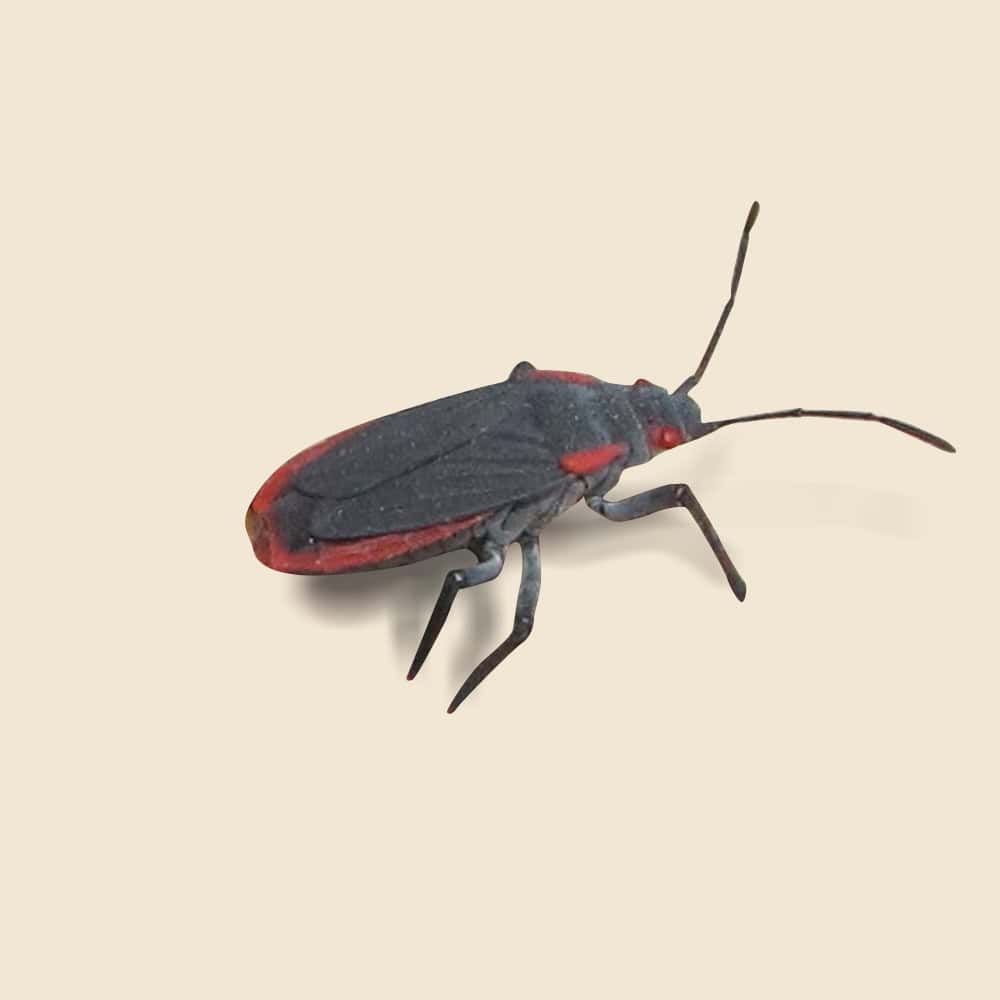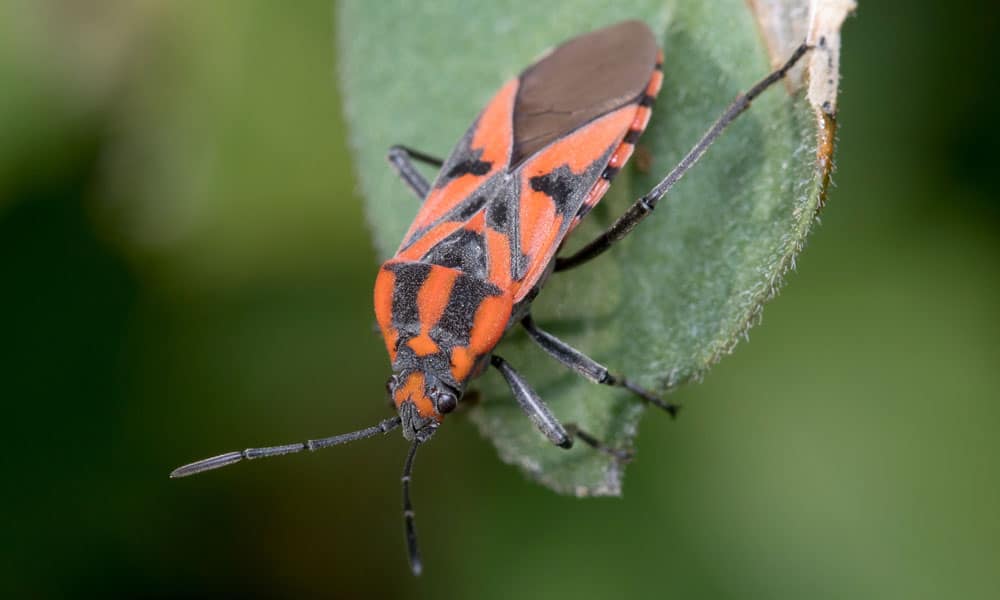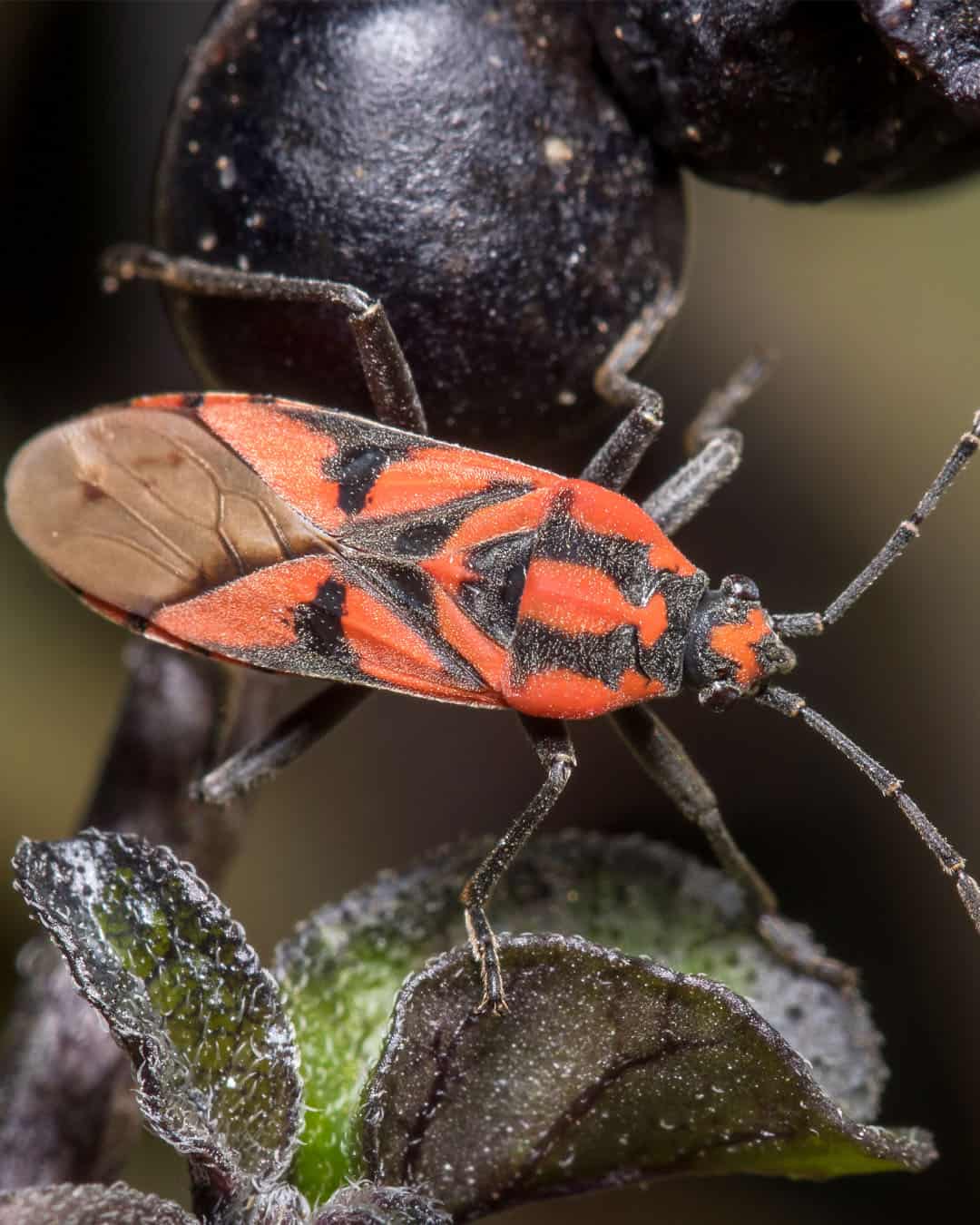Red-Shouldered Bug Facts & Information
Red-shouldered bugs, easily recognized by the bright red markings on their backs, are a common nuisance pest found in gardens and around homes. While they don't cause significant damage to structures, their habit of gathering in large numbers can be overwhelming, especially during certain times of the year.

Jadera haematoloma
What You Need To Know About Red-Shouldered Bugs
What do red-shouldered bugs look like?
Red-shouldered bugs (Jadera haematoloma) are small insects, typically measuring about 1/2 inch in length. They have a distinct black body with bright red markings along the edges of their thorax and behind their eyes, giving them their name. Their wings are dark with a reddish tint, and they have elongated, narrow bodies.
What do red-shouldered bugs eat?
Red-shouldered bugs primarily feed on seeds, particularly from trees like the boxelder, goldenrain tree, and other maples. They pierce the seeds with their mouthparts to extract the sap. While they primarily consume seeds, they may also feed on other plant material if their preferred food sources are scarce.
What sort of habitat do red-shouldered bugs live in?
These bugs are commonly found in areas where their host trees are present, such as woodlands, parks, and residential areas. They are often seen on or near the ground, especially around the bases of trees or under fallen leaves. In colder weather, they may seek shelter in cracks and crevices of buildings, where they can become a nuisance.
How do red-shouldered bugs commonly behave?
Red-shouldered bugs are generally harmless to humans but can be a nuisance when they enter homes in large numbers seeking warmth during cooler months. They are social insects, often found in large groups, especially in the fall. They are not aggressive and do not bite, but they can sometimes emit a foul odor when disturbed.
Did you know this about red-shouldered bugs?
Red-shouldered bugs are often mistaken for boxelder bugs due to their similar size and behavior, but they can be distinguished by the red markings on their shoulders. Unlike some other true bugs, red-shouldered bugs rarely cause significant damage to plants or crops, as they mainly feed on seeds rather than the plants themselves. Their tendency to congregate in large numbers makes them more noticeable, especially in the late fall and early spring when they are most active.
Understanding Red-Shouldered Bug Infestations
Understanding red-shouldered bug infestations is crucial for effective management. These bugs are small, about 1/2 inch long, with black bodies and distinctive red markings on their shoulders and sides. They are often found on or near boxelder trees, their primary host, but they also feed on a variety of other plants and seeds. Red-shouldered bugs are most noticeable in the fall and spring when they tend to congregate on sunny walls, trees, and other surfaces. They are not harmful to humans or pets, but their large numbers can be a nuisance.

How Hearts Handles Red-Shouldered Bug Treatment
Hearts Pest Management employs an integrated pest management approach to handle Red Shouldered Bug infestations.
Red-Shouldered Bug Inspection
Red-Shouldered Bug Treatment
Red-Shouldered Bug Prevention
Educational Resources

Think You Might Have a Red-Shouldered Bug Infestation?
At Hearts Pest Control, we understand the challenges associated with Red-Shouldered Bug infestations and are here to provide professional solutions tailored to your needs. Flourishing in warm and humid climates, they are prevalent in many regions, including San Diego County, Orange County, and Los Angeles County.